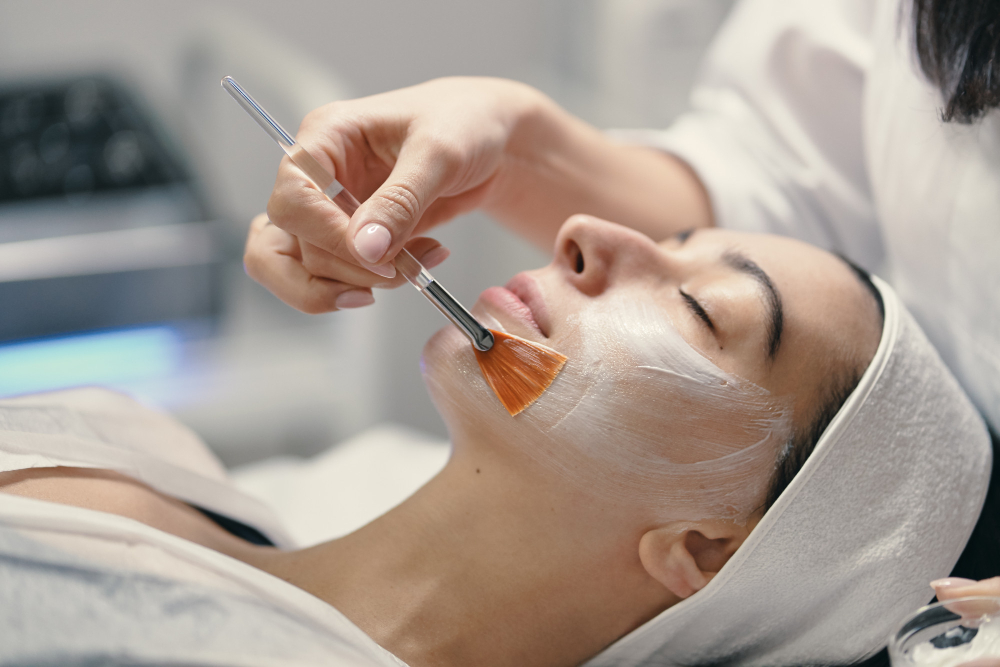Unveiling the Different Types of Chemical Peels

Chemical peels are a popular cosmetic treatment that helps rejuvenate skin and address various skin concerns. They are classified according to the depth of penetration into the skin and the resulting exfoliation. Everyone's skin is unique, and it's essential to choose the right type of chemical peel to achieve optimal results. With the numerous types of chemical peels available, it can be challenging to determine which type works best for you. This article discusses the different types of chemical peels to help you make an informed decision when seeking a chemical peel treatment.
1. Superficial Chemical Peel
Superficial chemical peels are the mildest type of peel and the most "lunchtime-friendly" among the rest. Its primary function is to remove dead skin cells while stimulating the production of new skin cells. They are ideal for treating fine lines, acne, uneven skin tone, and skin roughness. The treatment entails applying a mild acid solution that penetrates the topmost layer of the skin to exfoliate and stimulate collagen production. The procedure does not involve any downtime, and mild redness may be present.
2. Medium Chemical Peel
Medium chemical peels penetrate deeper into the skin and are highly effective for more significant skin concerns such as age spots, wrinkles, and acne scarring. The treatment uses a solution containing glycolic acid, trichloroacetic acid, or salicylic acid to remove damaged skin cells and stimulate cell turnover. After the procedure, the skin will appear red and may scab or peel for up to a week. It's advisable to avoid direct sun exposure during this period and wear protective clothing and sunscreen when going out.
3. Deep Chemical Peel
Deep chemical peels are the most potent type, designed to penetrate deep into the skin to treat severe skin concerns like severe acne scars and sun damage. The procedure involves the application of Trichloroacetic acid (TCA) or phenol to the skin, penetrating the dermis. Due to the more invasive nature of the procedure, a local anesthetic is administered to alleviate discomfort. However, the downtime is more extended as the skin can take several weeks to heal and may be red, swollen, and peeling.
4. Combination Peels
There is no "one-size-fits-all" approach to chemical peels, and some skin concerns may require more than one type of peel. Combination peels combine different types of peels tailored to address specific skin concerns like reducing wrinkles, correcting pigmentation, or treating severe acne. Combination peels can help improve the overall texture of the skin with a shorter downtime than a deep chemical peel.
5. Enzyme Peels
Enzyme peels use a combination of natural fruit enzymes to exfoliate and rejuvenate the skin's surface. They are milder than chemical peels and are ideal for people with sensitive skin. Enzyme peels can improve skin texture, reduce blemishes, and brighten the skin. Enzyme peels exfoliate the surface of the skin, but they do not penetrate the dermis like chemical peels, making them less effective for major skin concerns.
Conclusion
Chemical peels are an effective way of treating various skin concerns, from acne scarring to fine lines and wrinkles. Choosing the right type of peel depends on your skin type and the nature of your skin concerns, and a qualified aesthetician can help you determine what is best for you. With this knowledge, you can be confident in selecting a chemical peel treatment that suits your needs and delivers optimal results. If you would like to explore chemical peel treatments in Orlando, FL, contact Vamped Aesthetics & Design to schedule a consultation.